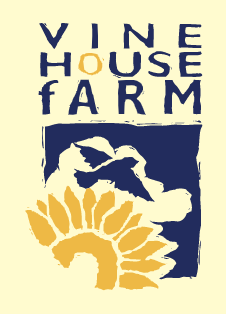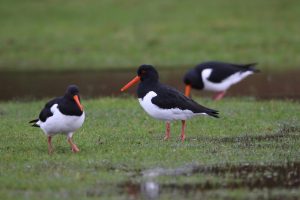
2022 has been dubbed as the warmest year ever – it may well have been overall, but not in this corner of England according to my records. 2020 and 2014 were both slightly warmer than 2022. December was the coldest since 2010 though, so if that month’s temperatures had been average, then we would’ve had the warmest year on record.
December has also been drier than average with only 38mm or 1.5 ins of rain. This made 2022 a dry year, with only 425mm or 16.7 ins of rain falling against our average here of 530mm or 21 ins. Only five drier years in the last 50 years here, the driest being 2011 with only 348mm or 13.7 ins, followed by a very wet 2012.

The frosty weather in the first half of the month did us no harm; it was seasonal and broke down the ploughing well.
December is a month to reflect on what has happened during the last year. We can see how our crops performed in 2022, but we really need to look back further to see if we still want to continue growing certain crops. One of those crops is the sugar beet.
We still have some sugar beet to harvest, but there’s a flock of birds that are already harvesting it. Between 500 and 700 of our resident Grey Lag Geese are coming to the field, but that’s only about half of them, so it could be worse. We frighten them off, but they soon come back within a couple of days. It is only these last four or five years that they have been eating the growing crop, before then they only landed in the fields that had been harvested. Now that they have a taste for it, they will be looking for it every year.
Greylag Geese are quite big birds and each of them will eat more than a pound of sugar beet a day, so the flock will be eating more than a ton a week. The problem will only get worse as their population grows – sugar beet is far more nutritious than grass or wheat shoots, so we have to decide whether to continue growing it. It’s a crop that we do not sell, as we are given the price before we sow it. Its big advantage is that it is a good break crop, it isn’t related to anything else that we grow and it can be grown every three years in a rotation.
Potatoes can only be grown every six years; better still if grown only every eight years, which is the same for peas. Wheat can be grown every year, but it will not yield well, as the farmer will get a better crop if it is grown every other year. The wider rotation a farmer can have, the bigger crops he will get.
With our bird seed crops, we are better placed to have a wider rotation than most farms. Ideally, we should be having four years cropping and four years grass, which gives all the invertebrates time to recover their populations. When we plough the land, 50% of the invertebrates get killed and as they are the ones that make the holes in the soil for the heavy rain to drain away, we need them. Therefore we are doing fewer cultivations now to increase the invertebrate populations.


All the Lapwings disappeared during the frosty weather, but they were soon back when the frost disappeared. Their reappearance so soon after the land thawed must mean that they only went to the Wash rather than heading off south west to Cornwall or Brittany. On the Wash, they would’ve continued to feed on the salty mud flats with the other 300,000 birds that spend the winter on the Wash. They would have been competing for the same food as the Golden and the Grey Plovers who, like the Lapwings, have short beaks and large eyes and are looking for invertebrates on the surface of the mud. However, there would’ve been plenty of space for them with more than 30 square miles of mud available to them at low tide.
The birds in my garden are not eating much food overall. The Tit family are there in good numbers, but that is all. Blackbirds are around but not eating much of the food put out for them, as there is plenty of natural food available in the form of crab apples and pyracantha berries.
It’s the number of Finches that are missing. There are plenty of burdocks around the farm and when I see a charm of Goldfinches rise up from these bushes, it makes me smile. None of my farming neighbours have left any burdocks for them; everything is mown flat. It might make me smile, but that charm would have been twice the size three or four years ago. Back in the 1990’s, we would’ve had a flock of 300 Goldfinches around the farm. On the whole, there isn’t much food left on our farms these days for birds. Our harvesting machines are very efficient and, in the Fens, there is so little area left unharvested and those areas are smashed to the ground on most farms by the flail mower.
Linnets have also declined; we have areas of wildlbird cover on the farm which, 25 years ago, would’ve contained a flock of 500. Ten years ago, the number reduced to 200 or 300 and now only 50 or 60 can be seen. When I look around on my neighbours farms, there is no food that I can see for them and nowhere for them to nest. I have a length of brambles, 70 or 80 yards along a dyke at Baston Fen, which I named Linnet City. Here I have been feeding Linnets for the past five years, where there were 150 or 200 of them.Now only 20 or 30 remain. On the plus side however, more farmers have been persuaded to plant wild bird cover, so maybe I am now sharing them with other farmers.
It is not all doom and gloom, as we are providing food and shelter for up to 1,000 Widgeon and 100 other ducks on our Wetland in Baston Fen, which is quite a spectacle. Widgeon are grazers and by the two grass fields there is water only 50 yards away from any point. If a bird of prey appears, they’ll fly to the water and if that bird looks as if it is heading their way, they’ll dive under and disappear. The other option would be to take to the wing, but will remain very visible – that is just how the Peregrine kills their prey. They select a bird in a flock and stoop on it so, strangely, it is safer to be on the water, ready to dive if needed.
These two grass fields with strips of water across them work well for wildlife for nearly all of the year. Before the Widgeon leave for their breeding grounds, the Lapwings, Oystercatchers and Redshanks will have taken up breeding territories to provide the next spectacle.



